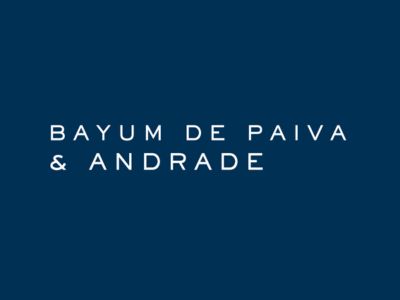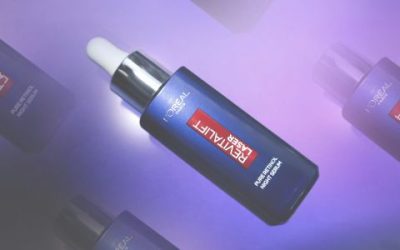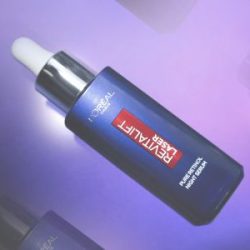The dupe culture, particularly in the fashion market, is here to stay. The less expensive versions of luxury garments and accessories are no longer a marginal phenomenon; they have become a driving force of the digital economy. While imitation has always been part of fashion, social media platforms such as Instagram and TikTok have amplified its reach, turning dupes into powerful tools of visibility and discovery. At the same time, copycats and lookalike products are increasingly available on global marketplaces like AliExpress, Shopee, and Temu.
As a result, the hashtag #dupe has accumulated billions of views, shaping how consumers discover, evaluate, and assign value to brands. Within this context, some companies are beginning to adopt strategic approaches to this phenomenon, and the athleisure brand Lululemon is a clear example. By filing the trademark LULULEMON DUPE with the USPTO, the company raises relevant questions about the use of trademarks as a means of narrative control and, most importantly, about how this approach can be added to enforcement strategies.
This strategic move aligns with other initiatives taken by Lululemon, one of the most frequently duped brands in the world and, according to its own statements, a company that has suffered “substantial and irreparable injury” from imitation. Actions such as its “Dupe Swap” event and the high-profile lawsuit against Costco over the sale of allegedly infringing leggings illustrate how the brand has sought to actively manage this phenomenon rather than merely react to it. In this scenario, registering a term that originated in the consumer’s own vocabulary, such as dupe, signals a long-overdue expansion of the enforcement strategy. It marks a transition from disputes focused solely on physical product copies to a broader battle for visibility, search, and narrative control in the digital marketplace. In fact, the LULULEMON DUPE trademark represents a new frontier for both protection and brand positioning, one where legal strategy and brand communication increasingly converge.
From a legal perspective, the implications of this strategy are multifaceted. With the trademark now granted by the USPTO, Lululemon can, in principle, prevent third parties from using the exact phrase to sell clothing or related products. This effectively allows the company to restrict the use of “Lululemon dupe” as a marketing hook, a creative way to curb copycat products that might otherwise fall outside traditional enforcement tools, particularly when the items do not reproduce a logo, a protected trade dress, or other clear infringing elements. The registration also gives the company additional leverage in search-based enforcement, especially in sponsored listings and keyword advertising, where control over specific terms can significantly influence visibility and consumer discovery.
It is relevant, however, that the application was filed on an intent-to-use basis, and the company has not yet disclosed how, or whether, it intends to use the mark in commerce. This leaves open questions regarding the future of the registration and the evidentiary burden Lululemon will face to maintain it. The brand may also encounter challenges grounded in the nature of the term “dupe” itself, which can be viewed as descriptive or even generic in certain contexts. Such characterization creates room for defenses based on descriptive use, nominative and descriptive fair use, and broader debates involving commercial free speech. These limits will likely shape the practical scope of enforcement and define how far a company can go in controlling terminology that originates in consumer vocabulary.
The registration of LULULEMON DUPE illustrates that the protection of brand assets is no longer confined to tangible copies but now extends into the realm of digital discovery. The strategy marks a shift from product-centered enforcement to an approach that encompasses language, perception, and search mechanisms, the spaces where consumers effectively form their relationships with a brand.
This move may pave the way for similar tactics by other companies, particularly in markets where visibility and virality accelerate the spread of dupes. For instance, the Canadian label Aritzia filed an application for the mark ARITZIA DUPE in 2025, signaling that the trademark-as-narrative-strategy is gaining traction. Controlling terms that originated in consumer vocabulary could become an additional layer of brand protection, though one inevitably shaped by legal constraints such as descriptive use, fair use, and commercial free speech. Between innovation and controversy, the battleground is increasingly migrating to the environments where consumption decisions occur.

Written by Marina M. J. de Andrade
Partner, Bayum de Paiva & Andrade Advogados
You may also like…
L’Oréal v. nkd: what this trademark battle means for SMEs and UK IP law
The trademark dispute between global beauty giant L’Oréal and Nottingham-based waxing salon nkd in the UK has...
INTA elects Deborah Hampton as 2026 President
Hollywood, Florida—November 18, 2024—The International Trademark Association (INTA) is pleased to announce the...
INTA files amicus brief relating to geographical indications filed for as collective mark applications
New York, New York—November 14, 2025—The International Trademark Association (INTA) has filed an amicus...
Contact us to write for out Newsletter













